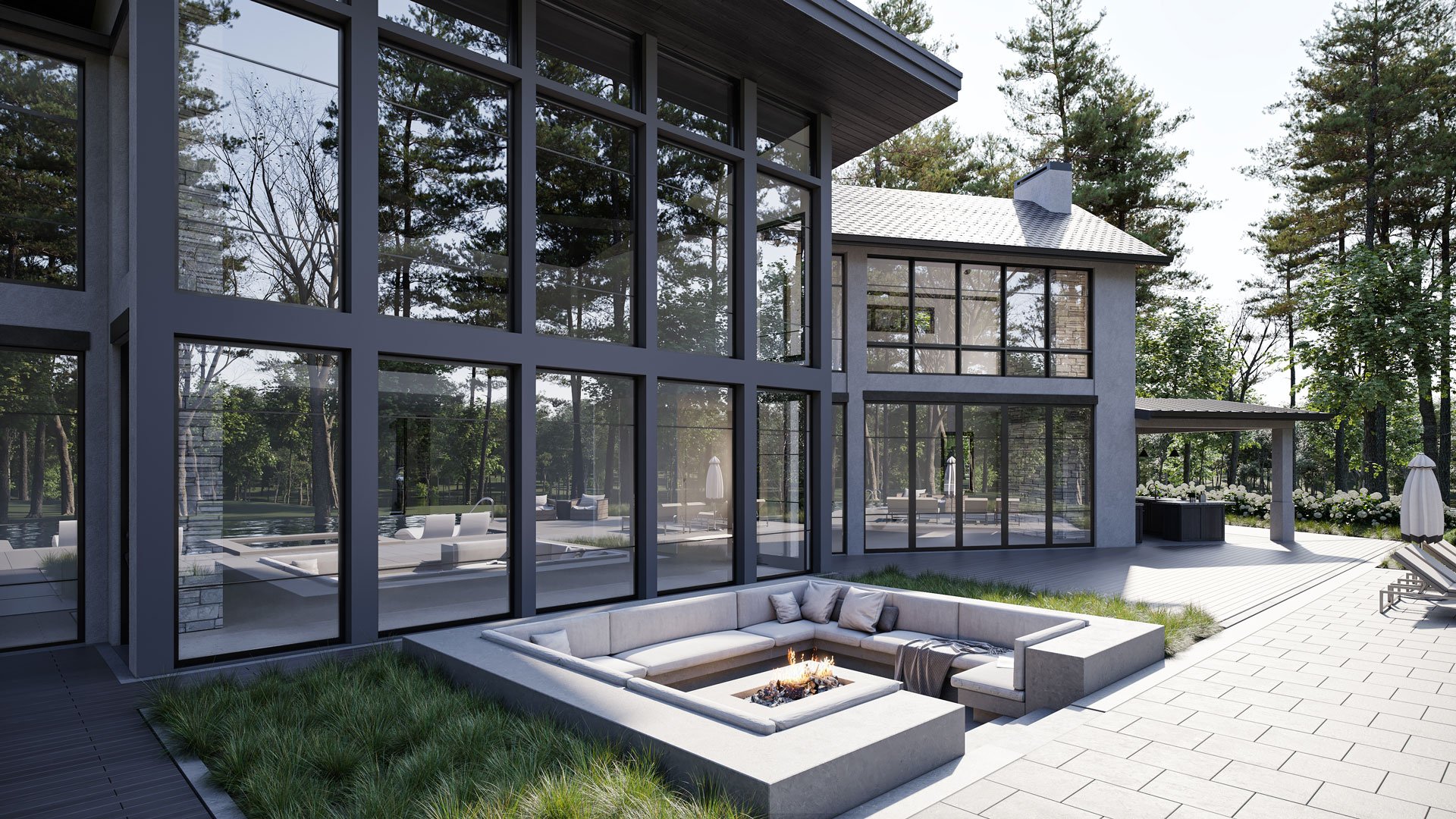In today’s competitive real estate market, visualizing a property before it’s built has become essential. Property visualization services allow clients to experience a project in detail, giving them a sense of the layout, design, and functionality long before construction begins. Selecting the right property visualization service can make or break a project’s presentation, so it’s vital to understand the qualities that distinguish high-quality services. Here’s a comprehensive guide on what to look for and how to make an informed decision.
Understanding the Value of Property Visualization
The significance of visualization, particularly in 3D visualization, cannot be overstated. Not only does it provide a lifelike preview, but it also allows for adjustments in the early stages, reducing costly changes during actual construction. Imagine a client walking through a virtual version of their future home, with the ability to view rooms from every angle, adjust lighting, or even rearrange furniture. A well-done visualization doesn’t just display a property; it tells its story, portraying exactly how a space feels, flows, and functions.
Real estate professionals and developers find these visualizations invaluable in their marketing efforts. Clients can be far more engaged when they can truly “see” a property in its entirety, and visualization helps address questions or concerns before they arise. As a result, the right property visualization service is not merely a tool; it’s a strategic partner that enhances sales, boosts client confidence, and builds a stronger brand

Essential Factors to Consider in a Property Visualization Service
When it comes to finding the ideal property visualization partner, several factors determine whether a service is the right fit. These include render quality, customization options, previous project experience, and budget transparency. Each element plays a role in ensuring that the final visualization meets expectations, both for your project and for the client.
Render Quality
First and foremost, the quality of the renderings should be the highest priority. With the growing demand for 3D visualization, potential clients often expect photorealistic visuals. The closer the render matches reality, the easier it is for clients to envision themselves within the space. High-quality renders also lend credibility to a brand, as they show attention to detail and a commitment to excellence. Many top visualization companies offer detailed shadowing, texturing, and lighting that make a property seem truly lifelike, down to reflections on glass or the grain of wood floors.
Customization Options
Next, consider the customization capabilities. Projects vary widely in their specific requirements, and an effective visualization service should allow for flexible, client-driven adjustments. This could mean anything from adjusting furniture layouts and choosing paint colors to customizing light sources and adding decor. Such flexibility enables a property visualization to be an accurate reflection of the client’s unique vision and allows clients to experiment with different styles, making the entire experience more interactive and engaging.
Experience with Similar Projects
Experience within your property niche is another factor that cannot be overlooked. Services that have worked on projects similar to yours understand specific industry standards, potential client expectations, and common pitfalls. For instance, if a service specializes in residential projects, they’re likely to have a good sense of what homebuyers prioritize, such as floor plans, kitchen layouts, and bedroom designs. Conversely, services with a background in commercial properties might excel at creating open layouts, accommodating specific lighting requirements, and focusing on professional spaces.
Budget Transparency
Budget is a vital consideration, and it’s crucial to work with a property visualization service that provides transparency on costs. From the beginning, a reputable service will offer a clear and detailed pricing structure, including the costs for any optional add-ons or extra revisions. This helps avoid unexpected expenses and lets you decide which elements are essential to your project. Knowing exactly what you’re paying for also allows for more informed decision-making and budget adjustments if necessary.
In-Depth Exploration of Visualization Service Types
Not all property visualization services are alike. Some services specialize in traditional 3D renderings, where a property is showcased in detail from multiple angles. This approach is effective for showing a project’s core elements, like structure, layout, and materials. However, as technology advances, there are more immersive options, such as Virtual Reality (VR) walkthroughs and Augmented Reality (AR) overlays. VR allows for a completely immersive experience, often through headsets, letting clients move virtually within a space. Meanwhile, AR brings virtual components into the real world, making it possible to see how changes might look within an existing space.
These tools are particularly powerful for larger or luxury projects, where clients might expect an elevated level of engagement. For smaller projects or residential spaces, traditional 3D visualization and 360-degree panoramic views may be sufficient. Each type offers different benefits, and the choice largely depends on the project’s scope, the budget, and the client’s expectations. Working with a visualization service that can offer these varied options means you can select the best approach for each unique project.
How to Choose a Property Visualization Service
In today’s competitive real estate market, selecting the right property visualization service is crucial. With clients increasingly expecting high-quality, realistic depictions, visualization services bring potential properties to life, helping clients visualize layouts, design elements, and even lighting well before construction. This guide will help you navigate the essentials in choosing a property visualization service that fits your needs.
Key Features to Consider When Choosing a Property Visualization Service
Finding the right service means understanding the factors that contribute to effective visualization, including render quality, customization options, experience with similar projects, and budget transparency. Each of these plays a role in helping you find a provider that aligns with both your vision and project requirements.
Render Quality
The render quality of a visualization service is critical. In a world where visualization 3D technology is advancing rapidly, photorealistic visuals set high-quality services apart from average ones. A photorealistic render captures details like shadows, textures, and lighting so accurately that a property appears real. High-quality renders allow potential clients to feel confident in their decision, as they can vividly picture themselves within the space. When evaluating a service, look for examples of previous work and gauge how lifelike their renders appear.
Customization Options
Flexibility is key when choosing a service, especially when each property visualization project has unique requirements. The ability to customize elements within the render, like furnishings, color schemes, decor, and light sources, is a valuable feature. A visualization service that offers such customization can make your project a true reflection of the client’s vision. The more customizable a visualization is, the more it engages the client, giving them an opportunity to see a representation of their dream space.
Relevant Experience
Experience with similar projects adds another layer of assurance that a service can meet specific needs. For residential projects, an experienced service may better understand the aesthetic priorities of homebuyers, such as kitchen layouts, bathroom designs, or outdoor spaces. On the other hand, commercial project visualizations often emphasize open layouts, productivity-optimized design, and functionality. Reviewing a service’s portfolio is a great way to assess whether they have experience in the type of property you’re working with.
Transparency in Pricing
Transparency in costs is an essential factor when choosing a visualization service. Many services provide a basic package with optional add-ons, and understanding what is included in the initial price helps avoid unexpected expenses later on. A clear pricing structure, particularly for elements like revision policies or customizations, ensures that you stay within budget while still achieving the results you want.
Exploring Different Visualization Service Types
Property visualization isn’t one-size-fits-all. While some services focus on 3D modeling and rendering to showcase architectural designs, others go further by offering Virtual Reality (VR) or Augmented Reality (AR). VR is ideal for high-end projects or large spaces where an immersive tour would significantly enhance the experience. For instance, a VR tour lets clients “walk through” the property as if it were already constructed, providing a sense of scale and flow unmatched by static images.
AR, in contrast, blends the virtual with the real, allowing clients to see how a property might look within its actual environment. This is especially helpful in showing how specific design elements or structural changes would integrate into existing spaces. Services offering both VR and AR are often more versatile, giving you options to tailor the visualization to the project’s unique needs and the client’s preferences.
Questions to Ask Potential Providers
Once you’ve narrowed down your options, asking the right questions can help clarify each provider’s strengths and ensure they’re a good fit for your project. For example, asking about their experience in similar projects or the details of their revision policies can reveal how well a service can adapt to your specific needs. Additionally, understanding their process from start to finish, including expected timelines, allows you to manage client expectations more effectively.
Here are some key questions to consider:
- What experience do you have with projects like mine?
- Can you show me examples of similar work?
- What is your estimated timeline for completing this project?
- How many revisions are included in the initial price?
- Do you offer both 3D visualization and VR/AR options?
A service that’s responsive, open, and transparent when answering these questions is more likely to be reliable and deliver quality results on time.
Comparison of Popular Visualization Software
An understanding of the tools used by visualization services can also be useful. Popular software like SketchUp, V-Ray, Lumion, and 3ds Max each bring something unique to the table. For instance, SketchUp is often chosen for quick, user-friendly 3D modeling, while V-Ray is known for photorealistic rendering, giving renders that high-quality lifelike look. Services that use these advanced tools generally produce more polished and customizable results, so it’s worth inquiring about their software during the selection process.
The Pros and Cons of Using a Property Visualization Service
While property visualization offers numerous benefits, it’s important to weigh the pros and cons. On the plus side, high-quality visualization enhances client engagement and boosts confidence by providing an accurate preview of the project. It also improves your marketing efforts, as visually appealing content can be a powerful selling tool.
However, property visualization can be costly, especially when advanced features like VR or AR are involved. Additionally, projects with complex customization needs may take longer, which can add to the timeline. Despite these considerations, the value of a well-done visualization generally outweighs the costs, especially when it contributes to project success and client satisfaction.
Choosing the right property visualization service means balancing quality, customization options, relevant experience, and transparency. By understanding what each service offers, asking insightful questions, and recognizing the strengths of different visualization types, you can select a provider that aligns with your project’s goals and budget. With the right partner, property visualization becomes a powerful tool, allowing clients to truly envision and connect with their future space long before they step inside.








